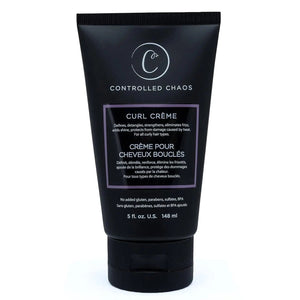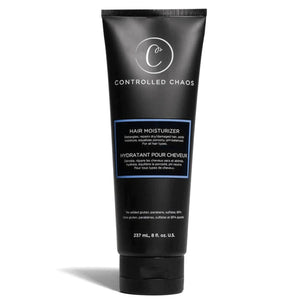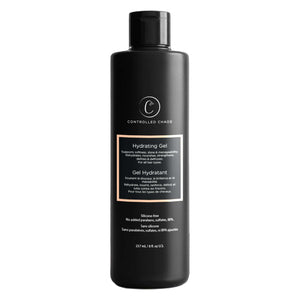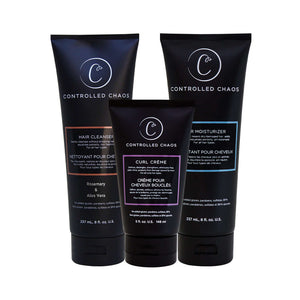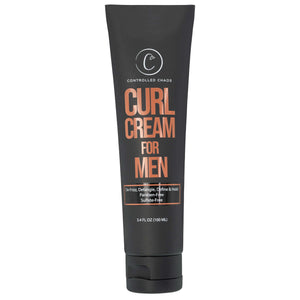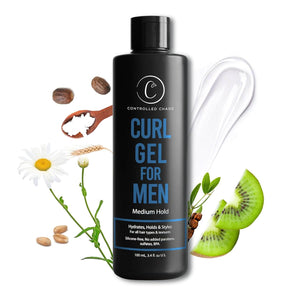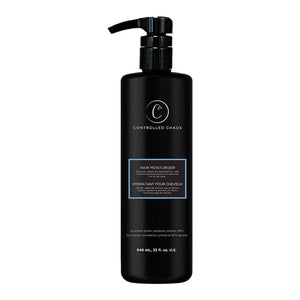

Curly hair is unique, beautiful, and full of character, but managing it can sometimes feel like a challenge. Whether you have loose waves or tight coils, curly hair requires more attention to keep it looking its best. Here’s a comprehensive guide to managing curly hair effectively, ensuring your curls stay defined, healthy, and frizz-free.
1. Start with a Good Hair Care Routine
The foundation of managing curly hair begins with a solid hair care routine. Curly hair tends to be drier than straight hair because the natural oils have a more challenging time traveling down the twists and turns of the hair shaft. To address this:
-
Use a sulfate-free shampoo: Sulfates can strip hair of its natural oils. Look for a gentle, moisturizing shampoo that nourishes without overdrying.
-
Condition deeply: Curly hair thrives on moisture. A rich conditioner will help hydrate your curls and prevent frizz. Look for products with ingredients like shea butter, aloe vera, and glycerin.
-
Detangle carefully: Wet hair is more fragile, so detangle with care. Use a wide-tooth comb or your fingers to gently remove knots, starting from the tips and working up to the roots.
2. Leave-in Conditioner
Leave-in conditioners are essential for curly hair. They provide extra moisture and help define curls. After washing your hair, apply a generous amount while it is still damp. This will lock in moisture and create a smooth base for styling.
3. Choose the Right Styling Products
Curly hair needs products that enhance its natural texture without weighing it down. Depending on your curl type, consider using:
-
Curl creams or gels: These products help define and hold curls in place, keeping frizz at bay.
-
Lightweight mousse: If you have delicate curls, mousse can provide volume without the heaviness of creams or gels.
-
Hair serums or oils: To add shine and reduce frizz, finish with a small amount of hair oil or serum, focusing on the ends.
4. Dry Your Curls with Care
How you dry curly hair is crucial to maintaining its shape and volume. Avoid rough towel-drying, as it can cause frizz and breakage. Instead, try these techniques:
-
Plopping: After applying your styling products, use a microfiber towel or a cotton t-shirt to scrunch and dry your curls gently. This technique helps define curls without causing frizz.
-
Diffusing: If you prefer to blow-dry your hair, attach a diffuser to your blow dryer. This helps distribute heat evenly, preserving curl definition while reducing frizz.
5. Protect Your Curls While Sleeping
To keep your curls looking fresh overnight, it’s essential to protect them while you sleep. Try these tips:
-
Pineapple your hair: Gather your curls into a loose, high ponytail on top of your head to keep them from getting crushed while you sleep.
-
Use a satin or silk pillowcase: Cotton pillowcases can absorb moisture and cause friction, leading to frizz. A satin or silk pillowcase will help retain moisture and reduce breakage.
6. Regular Trims Are a Must
Curly hair can grow unevenly and develop split ends faster than straight hair. Regular trims every 6-8 weeks are key to keeping your curls healthy and bouncy. This will help prevent split ends and ensure your curls maintain their shape.
7. Hydrate from the Inside Out
Curly hair thrives on moisture, and that starts with your body. Drink plenty of water to keep your curls hydrated from the inside. A balanced diet rich in vitamins and minerals will also contribute to healthy hair growth.
8. Experiment with Curl-Friendly Hairstyles
Embrace the versatility of curly hair! There are plenty of styles that can enhance your curls, such as:
-
Bantu knots: Perfect for creating defined curls.
-
Twist-outs: To achieve voluminous, defined curls, twist sections of your hair, let them dry, and then unravel.
-
Braids: For a more textured, boho look, braid your hair before bed for waves or curls in the morning.
9. Know Your Curl Type
Understanding your curl type is a game-changer when managing your curls. Curls come in different shapes, textures, and sizes, from loose waves (Type 2) to tight coils (Type 4). Knowing your curl type can help you select the right hair products and techniques to enhance your natural texture. Here's a quick breakdown of curl types:
-
Type 2 (Wavy hair): Wavy hair tends to form gentle S-shaped curves. It’s easier to manage, but it can get frizzy.
-
Type 3 (Curly hair): Curly hair forms defined spirals or ringlets. It may be prone to frizz, especially in humid weather.
-
Type 4 (Kinky/coily hair): These curls are tight, densely packed, and prone to dryness and shrinkage. They require extra care and moisture to maintain their health.
Once you know your curl type, you can tailor your routine to suit its specific needs. For example, if you have tighter curls, opt for heavier creams and oils to add moisture, while wavy hair might benefit from lighter gels and mousses to keep the texture defined without weighing it down.
10. Avoid Heat Styling as Much as Possible
While it’s tempting to straighten or curl your hair with heat tools for a different look, excessive heat styling can damage curly hair, leading to dryness and breakage. Instead of relying on heat, embrace your natural curls and learn to work with them. If you must use heat, apply a heat protectant beforehand and use lower heat settings to minimize damage.
11. Deep Condition Regularly
Deep conditioning is crucial for curly hair; it helps restore moisture and repair any damage. Once a week or every other week, treat your curls to a deep conditioning mask that provides intense hydration. Look for masks rich in coconut oil, avocado oil, honey, and shea butter—these ingredients work wonders for curly hair by locking in moisture and strengthening the strands.
12. Use the Right Tools
The tools you use can make a huge difference in how your curls behave. A wide-tooth comb or your fingers are great for detangling curls. Consider using a diffuser with your blow dryer to ensure an even heat distribution when styling. Avoid brushes, as they can disrupt the curl pattern and cause frizz. Opt for tools designed specifically for curly hair to make detangling and styling easier.
13. Don’t Over-Wash Your Hair
Curly hair doesn’t need to be washed every day. Washing your hair too often can strip it of natural oils, leaving it dry and prone to frizz. Depending on your hair's needs, aim to wash your hair 1-3 times a week. If you need to refresh your curls between washes, you can use a curl refresher spray or dry conditioner to add moisture and revitalize your curls without needing a full wash.
14. Be Gentle with Your Curls
Curly hair is more delicate than straight hair, so it’s essential to be gentle when handling it. Avoid aggressive towel-drying, as this can cause breakage and frizz. Instead, gently blot your hair with a microfiber towel or an old t-shirt to remove excess moisture. When detangling, always start from the tips and work your way up to avoid causing unnecessary tension on the hair.
15. Experiment with Protective Styles
Protective hairstyles are great for keeping your curls safe from the elements and minimizing manipulation. These styles help reduce frizz, prevent tangling, and give your hair a break from daily styling. Some popular protective styles for curly hair include:
-
Braids: Classic and versatile, braids keep curls tucked away while giving them a break from styling.
-
Twists: Two-strand or flat twists can help define curls while preventing frizz.
-
Bantu knots: These are small sections of hair twisted and pinned into knots that can be left overnight for defined curls the next day.
These styles protect your curls and allow you to enjoy a new, stylish look while letting your hair recover.
16. Balance Protein and Moisture
Curly hair often needs protein and moisture to maintain its structure and elasticity. Over-moisturizing can lead to limp curls, while too much protein can cause hair to become stiff and break. The key is balance. Monitor your hair's response to different products and adjust your routine for the right mix. If your curls feel brittle or weak, it may be time to incorporate more protein into your routine (like through a protein treatment). If they’re feeling dry and stiff, focus on hydrating treatments.
17. Stay Patient with Your Hair Journey
Curly hair can be temperamental and require trial and error to figure out the best routine. Don’t be discouraged if things don’t go perfectly right away. Over time, as you experiment with different products and techniques, you’ll learn what your hair loves and doesn’t. Embrace the journey of discovering your natural curls, and don’t be afraid to let your curls evolve and grow.
Final Thoughts
Managing curly hair doesn’t have to be daunting. Your curls can become your best asset with the right tools, products, and techniques. Embrace the beauty and versatility of curly hair, and remember that consistency is key. With patience and the proper care, you can rock beautiful, healthy curls daily!
FAQS
How do I tame frizzy curly hair?
To tame frizzy curly hair, focus on keeping it moisturized. Use hydrating products like curl creams and leave-in conditioners, and avoid over-drying your hair. Additionally, try applying a lightweight serum or oil to seal in moisture and smooth down frizz. Always dry your hair with a microfiber towel to reduce friction.
What are the best techniques for managing curls?
Managing curls starts with a good hair care routine, including moisturizing and detangling gently. Use curl-enhancing products like creams and gels to define your curls, and avoid heat styling too often. Dry your curls with a diffuser or by scrunching them with a microfiber towel, and protect them at night by using a satin pillowcase or pineapple-ing your hair.

